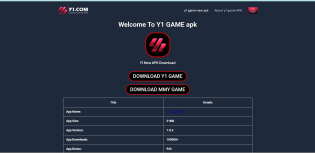A2Bookmarks UAE Social Bookmarking Website
Welcome to A2Bookmarks UAE, where discovering and sharing the latest trends in the UAE becomes an engaging and seamless experience. Our platform is designed specifically for the UAE community, offering a space to explore popular local content, save your favorite websites, and connect with like-minded individuals. With our intuitive interface, you can effortlessly categorize and access your bookmarks, while our vibrant community keeps you updated with the most relevant and captivating content from across the region. Join A2Bookmarks UAE community today and enhance your digital bookmarking journey!


Why Embroidery Digitizing Services Matter to Every Apparel Brand truedigitizing.com
When Lena launched her capsule hat collection she assumed the hardest part would be marketing. After the first delivery arrived she found logos that looked wrong, letters that blurred, and wasted stock piling up. The issue was not thread or machine. The problem was the stitch file itself. Once she worked with experienced embroidery digitizing services the next samples stitched out cleanly and her production timeline returned to normal. That small change kept her launch alive and taught her a lesson many business owners learn the hard way: quality embroidery begins long before the needle touches fabric.
In this article I will explain what embroidery digitizing services are, how custom approaches differ from automated tools, which production problems digitizing solves, practical checks you can require from a provider, and simple steps designers can take to make their files work the first time. After the introduction I will also include two helpful resource links so you can explore options for professional help.
What embroidery digitizing services actually do
Embroidery digitizing services convert artwork into stitch instructions that embroidery machines can read. These instructions cover stitch type stitch density stitch direction underlay and the sew sequence. A digital file is more than a picture. It is a precise set of commands that tells the machine where to place each stitch and how that stitch should relate to its neighbors.
A high quality service will consider the final substrate for the design. Knit, woven, fleece and cap crown all behave differently under a needle. The digitizer decides where to add an underlay so the top stitches do not sink, how dense a fill should be so the fabric does not pucker, and whether a thin serif should be widened so the letters remain legible.
Why generic or auto generated files fail in production
Auto digitizing tools are attractive because they are quick and inexpensive. But these tools rely on general rules. When a design needs context specific knowledge such as foam puff applique or chenille those general rules break down. The machine obeys the file exactly so any mistake in the file becomes a visible error in the product.
Common production failures from poor digitizing include puckering thread breaks distorted shapes and unreadable small text. Each failure adds cost. Operators stop machines to fix problems and bosses waste labor and blanks. A well digitized file prevents most of this by anticipating real world machine and fabric behavior.
How custom embroidery digitizing services differ from basic offerings
Custom embroidery digitizing services are not template based. They include human decision making. A professional digitizer may manually plot stitch nodes choose stitch angles and set pull compensation by hand. They adapt density and underlay to the fabric and they sequence stitching to reduce trims and jump stitches.
Custom digitizing often includes production notes for the operator. These notes might recommend needle size backing type and machine speed for the first heads. Those small instructions reduce operator guesswork and increase the chance that a test stitch will pass without revision.
The key steps in a professional digitizing workflow
A reliable provider will follow a clear workflow:
- Review and clean up the artwork including vector conversion when necessary
- Segment the design into appropriate stitch types
- Add underlay and adjust stitch density according to the fabric
- Apply pull compensation for small shapes and letters
- Sequence stitching to minimize trims and jump stitches
- Export the file in the requested machine formats
- Provide a production sheet with suggested machine settings
- Offer test stitch adjustments if the client requests a proof
Each step reduces uncertainty and increases repeatable output across heads and factories.
Where digitizing saves time and money
At first glance digitizing is an extra cost. But poor digitizing causes re runs wasted blanks and operator overtime that quickly outweigh the fee for a good file. When a file runs smoothly operators do not need to babysit machines. Fewer stops mean higher throughput and lower labor costs per item.
For small shops the value is immediate. Instead of wasting several garments to troubleshoot a single design a good file often prevents that entire waste. For larger operations the cumulative savings across thousands of units become substantial.
Practical examples of problems a digitizer prevents
- Thin text narrowing into an unreadable blob. Solution widen letterforms and adjust stitch direction.
- Heavy fills that cause fabric to stiffen. Solution reduce density and add appropriate underlay.
- Puffy or raised elements crushing under trimming. Solution plan tack placement and trimming allowance.
- Jump stitches that leave visible thread tails. Solution resequence colors and add clean trims.
These fixes are technical and they depend on anticipating how thread and fabric interact during the sew.
How to prepare artwork for best digitizing results
Good input produces better output. To speed the process and reduce revisions send:
- Vector files when possible AI or EPS are ideal
- Clear instructions about final size and substrate
- Notes on special treatments like puff chenille or applique
- A reference sample if repeatability is required
If the artwork has tiny gradients or photographic detail consider simplifying those areas or using applique or printing instead. Embroidery renders block shapes more reliably than fine gradients.
Testing and proofs matter
Ask the provider whether they offer a test stitch or a low speed proof. A proof run shows how the file behaves at production speed and reveals issues only seen under real sewing conditions. Make adjustments at the proof stage rather than after a full production run.
Formats and machine compatibility
Different embroidery machines prefer different formats. Industrial heads commonly accept DST while popular home machines might use PES JEF or EXP. Confirm the formats your facility uses and request exports for those systems. A professional will deliver multiple formats when needed.
Communication checklist for ordering files
- Confirm the final dimensions and placement
- State which product types will use the file caps shirts jackets patches
- Mention expected run size and whether you need a test stitch
- Ask for a production note with needle size backing and recommended speed
- Clarify revision policy so you know how many edits are included
Good communication reduces back and forth and speeds delivery.
How to evaluate a provider before you buy
Look for the following signals:
- Portfolio showing similar product types and complexity
- Clear production notes and a willingness to run proofs
- Fast response times and specific questions about substrate and size
- Transparent revision and refund policy
- Positive testimonials from brands with repeat orders
A portfolio that includes caps patches and apparel stitched on similar fabrics to your product line is particularly useful.
Where specialized techniques need extra planning
If you plan to use puff applique or chenille each requires specific planning. Puff needs foam height and trimming allowance, applique needs tack downs and clear edge designs and chenille needs special loop control and backing. Mention these effects up front and the digitizer will adapt underlay tack and sequence settings accordingly.
Stitch count and production speed
Stitch count influences runtime and thread usage. Digitizers optimize pathing to reduce redundant travel and trims. That optimization can shave minutes per piece across large jobs which translates to meaningful savings on labor.
Repeatability and archive management
A master digitized file is an asset. Keep an organized library with notes about size and substrate so you can reuse files. When reorders arrive you can reference the exact file used previously to ensure identical output.
Common negotiation points with digitizing companies
Discuss turnaround times included revisions and proofing options. Some providers offer rapid delivery for an extra fee some include one or two free revisions within the base price. Agree on these terms early to avoid surprises.
Why many businesses outsource digitizing rather than train in house talent
Digitizing well takes practice and software investment. Training an employee requires time and exposes you to mistakes during the learning curve. Outsourcing lets you tap experienced operators who deliver usable files quickly and free your team to focus on sales production and quality control.
One practical workflow for small businesses
- Send vector artwork with intended size and product list
- Ask for a test stitch on the most problematic substrate first
- Review the sample and request consolidated edits if needed
- Approve the final file and request exports for each machine format
- Store the file and production notes for future orders
This simple workflow prevents most common failures.
How to read a stitch sheet
Request a stitch sheet that shows stitch counts sequence and thread stops. This helps production estimate runtime and thread usage and lets you plan color changes efficiently during multi head runs.
Quality signals in a finished sample
When inspecting a proof look for:
- Clean edge definition and no fuzzy outlines
- Even fill density with no rippling or sinking
- Legible text after trimming and washing
- Minimal loose threads and tidy back side stitching
If these indicators are present you likely have a usable file for production.
When embroidery might not be the ideal choice
Photos or extreme gradients may never translate well to thread. In these cases consider applique or printing for photo like detail and reserve embroidery for logos and block shapes where thread detail enhances texture.
Cost benefit snapshot
Compare the digitizing fee to the cost of one wasted blank garment. If a single wasted item costs more than the digitizer fee you likely benefit from paying for a professional file. Over multiple runs the benefits compound.
Final checklist before you approve a production run
- Confirm the file size and placement on the garment
- Request a low speed proof on the intended substrate for the first run
- Ask for needle and stabilizer recommendations in the production notes
- Approve consolidated feedback only after a single round of edits
- Archive the final file and production notes for reorders
Good preparation avoids last minute surprises and keeps your production on schedule.
Closing thoughts
Embroidery success depends on many small technical decisions that start at the file level. Investing time and money into proper digitizing prevents common production errors improves brand consistency and saves resources in the long run. If you care about clean stitching consistent color and fewer returns a professional digitizer is one of the best partners you can select.
Will you consider using professional embroidery digitizing services to protect your next production run?















